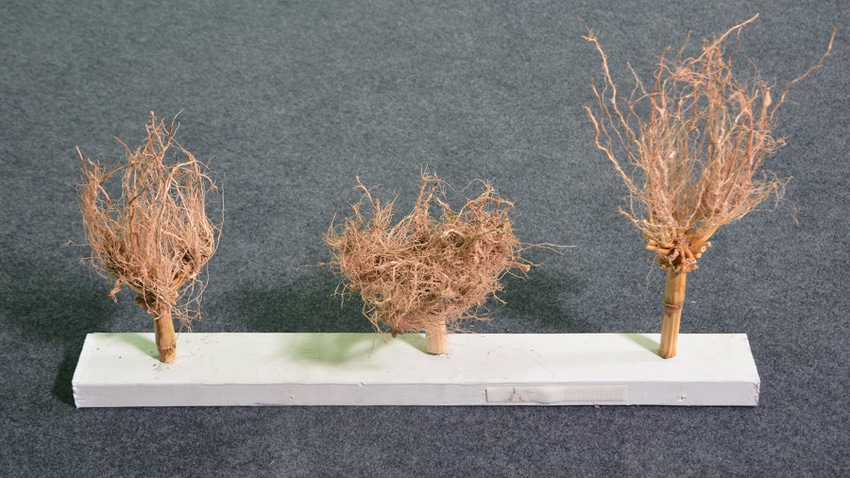
What is the first thing a typical seed salesperson talks about? Yield, period. A close second might be ear characteristics. Third, he or she emphasizes disease resistance and tolerance, followed by GMO traits.
What’s missing? Roots! Except during the rootworm traits pitch, they’re not often a front-burner issue. Roots usually fall into the “out of sight, out of mind” category.
Until now. Researchers and some seed companies are paying more attention to roots. Scott Foxhoven at the University of Illinois determined that root volume impacts corn yields by as much as 50 bushels per acre, depending upon the soil fertility system.
“That got our attention, and we’re getting serious about root research,” says Jim Schwartz, director of research, agronomy and practical farm research for Beck’s, Atlanta, Ind. Since then, Beck’s began cooperating with the U of I, comparing roots from different hybrids.
Results and questions
Hybrids can vary in total root volume and angle of roots in relation to the soil surface. Even in similar soils, some roots grow sideways, while roots of some hybrids head downward at varying angles.
“There are three distinct types of roots,” Schwartz says. Check out the photo above.
“Some hybrids produce flat-shaped roots, which grow sideways before turning downward,” Schwartz explains. That’s true even if soil compaction isn’t an issue. Some hybrids produce roots that grow down at sharp angles. In a third type, roots grow down in an arc rather than a sharp angle, Schwartz says.
If companies categorized hybrids by root types, would it matter? “If there were practical applications, such as determining certain root types respond better to banded fertilizer, it would matter,” Schwartz says.
Right now, there are more questions than answers, he notes. Here are key questions yet to be answered:
Does root shape affect total root volume?
Does root angle matter to the plant and final yield?
Does root architecture affect nitrogen uptake?
Does plant population and spacing within the row affect root shape and/or volume?
What impact occurs if roots from one row overlap roots from another row, or when one plant’s roots overlap another plant’s roots in the same row?
Stay tuned. Look for updates from both Beck’s and U of I research.
Reaching the ‘aha’ moment
Imagine 15 sets of corn plants with roots propped up against the wall in a 4-H building. Your job as crops judge is to evaluate each set of plants and select a grand champion.
That’s my task at multiple county fairs each summer. Halfway through the judging schedule this past summer, I realized something I overlooked before. One 4-H’ers plants might have roots that went wide and then dipped down. The next set of roots might go down in a tight oval, or they might head downward in a half-bowl shape. Talk about making it hard to pick a winner.
Fast-forward to late August. Jim Schwartz, director of research, agronomy and practical farm research for Beck’s, pulled up a display with three roots at a field day. Each root mass had a different shape.
Aha! Now what I saw all summer made sense. Different hybrids produce roots with different patterns. As Schwartz explained about the three distinct root types, I smiled. From 4-H exhibits to a farmer talk, now it all made sense!
About the Author(s)
You May Also Like




